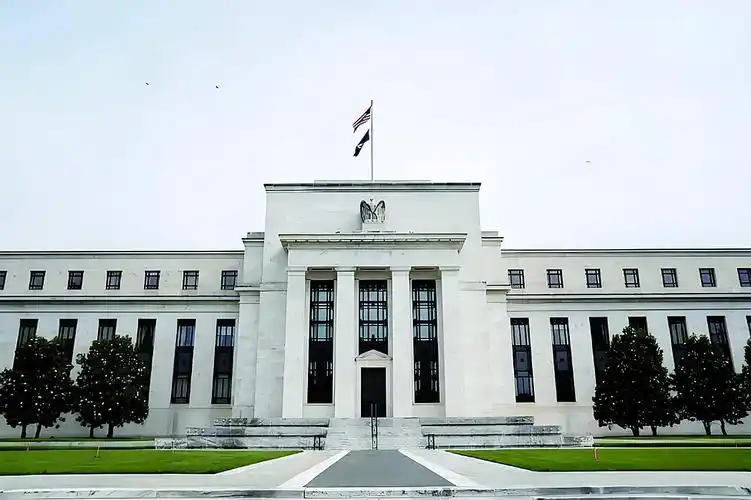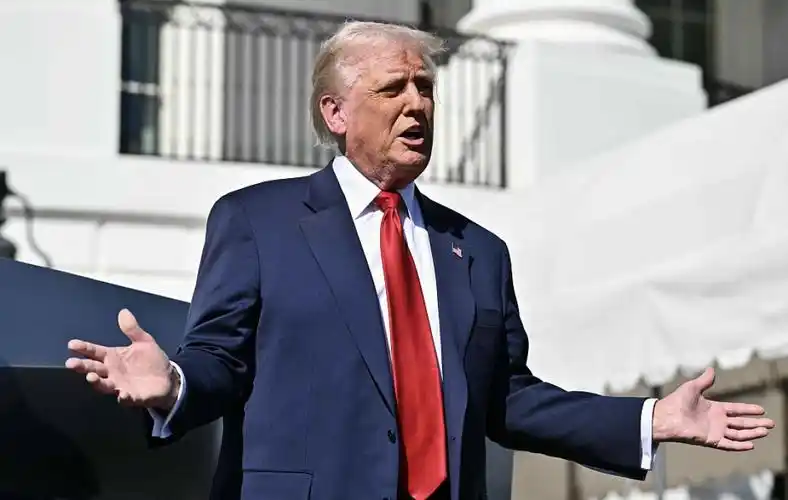In the world’s largest bond market, investors are opposing President Donald Trump’s tax cut plan.
On Wednesday, these measures pushed the benchmark 30-year US Treasury yield up to 5.1%, just below the highest level in two decades, and triggered a decline in the stock market and the dollar. Meanwhile, government officials were meeting with Republican lawmakers to finalize an agreement to implement interest rate cuts.
Worryingly, at a time when global investors’ interest in US assets is waning, this tax bill will add trillions of dollars to the already swollen budget deficit in the coming years.
“There is no doubt that the bond market will vote on the terms of the budget bill,” said George Catrambone, head of fixed income and trading at DWS Americas. “It looks like this president or this Congress is not really going to make a significant dent in the deficit.”
Late last week, Moody’s downgraded the United States’ top credit rating, dealing a heavy blow to investor confidence in US Treasuries. On Wednesday, demand for a 20-year bond auction was unexpectedly weak, further eroding investor confidence in US Treasuries.
This sharp fall exacerbated the bond sell-off that has lasted for several weeks, highlighting investors’ growing disappointment with Washington’s increasing debt. The decline in fixed income also emboldened conservative Republican lawmakers who oppose Trump’s tax cuts, some of whom pointed out the bond market’s plunge and the message it conveyed on social media.
Texas Republican Representative and fiscal hawk leader Chip Roy mentioned a post about a “bad bond auction” on X. Additionally, Ohio Republican Warren Davidson also referred to a post about rising yields.
On Wednesday evening, House Republican leaders unveiled a new version of the bill, raising the deduction for state and local taxes and making other changes to win over factions within the party. U.S. Treasury prices were little changed in Asian trading on Thursday.
Overall, bond investors demand higher returns for longer-term bonds – and not just in the US. Yields on 30-year bonds in Japan and the UK also rose sharply this week.
Priya Misra, a portfolio manager at JPMorgan Asset Management, said: “The bond market is sending a warning signal to policymakers that fiscal sustainability issues cannot be ignored for too long. This is not just a bond market issue; now these concerns are clouding risk sentiment and the stock market, and the credit market is starting to pay attention as well.”
The rise of the so-called bond vigilantes indicates that a sufficient number of investors believe that only by raising borrowing costs can the government eventually succumb to pressure and cut spending. This process occurred in the United States during the early days of the Clinton administration in 1993 and in Europe after the financial crisis.
“The market will always impose constraints on this matter,” said Tim Magnusson, chief investment officer of Garda Capital Partners, a $11.5 billion hedge fund. “Unless you address welfare reform – Social Security, Medicare, Medicaid – you won’t make any progress. That’s the only way out. The bond market is always the source of constraints.”
Although the current yield on US bonds is between 4% and 5%, approaching the levels seen in 2007 and before the financial crisis (and historically, the US has sometimes paid much higher interest rates), the debt and deficits are now growing exponentially. That’s where all the differences lie.
A look at the fiscal deficit explains why the bond market is so jittery. According to the Congressional Budget Office, the ratio of total public debt to the size of the economy in the United States is approximately 100%. The Congressional Budget Office’s data shows that interest payments alone will amount to about $880 billion in 2024, exceeding the defense budget.
The U.S. national debt has soared from less than $14 trillion at the end of 2016 to nearly $30 trillion, reflecting the tax cuts passed during Trump’s first term and the borrowing surge during the COVID-19 pandemic under both Trump and former President Joe Biden. According to bond market trade group Sifma, the total annual sales of government debt last year reached a record $2.6 trillion.
“The government seems to be making a rather risky bet that economic growth will reverse the trend of debt and deficits,” said Bill Campbell, a portfolio manager at DoubleLine. “But if economic growth fails to turn the situation around, then you are accelerating the trajectory of fiscal deterioration. You are taking a risk that could make this trajectory even more difficult to deal with in the future.”
The growing concerns of investors pose a challenge to the United States, which has long taken advantage of the dollar’s status as the world’s major reserve currency. This also reinforces the worst-case scenario depicted by US Treasury Secretary Scott Bessent, who told US lawmakers this month that the country’s debt path is unsustainable.
He also said he was aware of the power of the bond vigilantes and added that it was “difficult to know” the point at which investors would “rebel”.
“Bond investors are now digesting the rising risk of fiscal deterioration,” said John Velis, a macro strategist at BNY Mellon in New York. “They say, we don’t like the current situation and we won’t buy bonds.”


